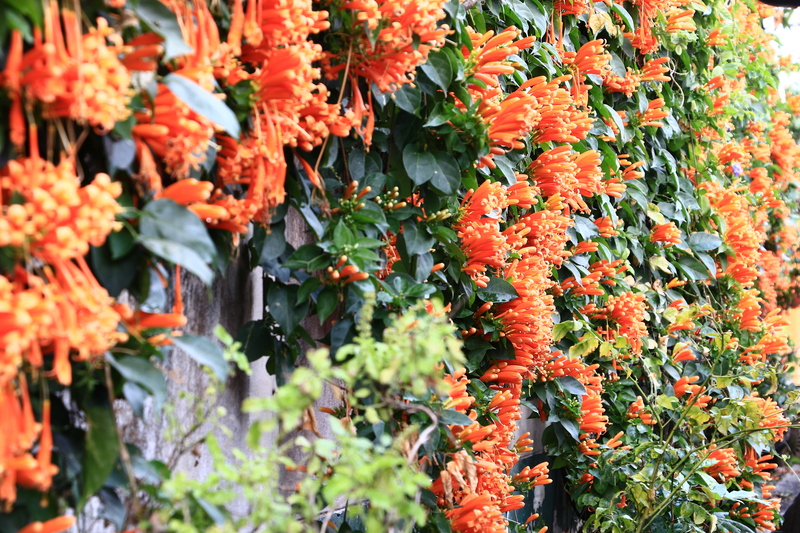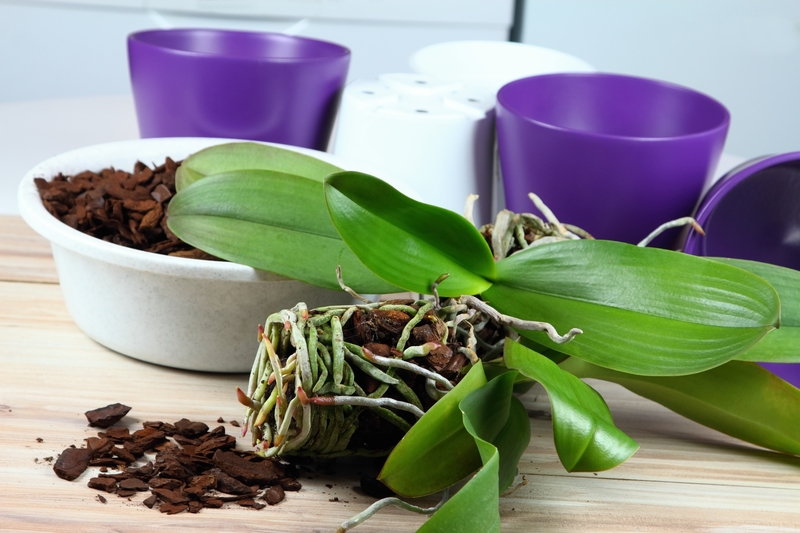Unleashing the Secrets of Herb Growing
Posted on 29/09/2025
Unleashing the Secrets of Herb Growing: A Comprehensive Guide
Are you ready to dive into the wonderful world of herb growing? Whether you're an aspiring chef, a health enthusiast, or someone seeking a greener lifestyle, cultivating herbs at home can be a rewarding and enriching experience. In this detailed article, we'll unveil the secrets of growing herbs successfully, from choosing the right varieties to advanced cultivation techniques. Unlock the joy of fresh flavors, vibrant aromas, and the satisfaction of harvesting your own home-grown herbs!

Why Grow Your Own Herbs?
Before delving into the details of herb gardening, let's explore the benefits of cultivating herbs at home:
- Freshness and Flavor: Home-grown herbs offer unmatched freshness and potency, enhancing every dish with robust flavor.
- Cost-Effective: A small investment in seeds or starter plants yields a season of abundant harvests, saving you money on grocery-store herbs.
- Convenience: Snip fresh herbs whenever you need them--no more last-minute trips to the store.
- Health and Wellness Boost: Many herbs, such as basil, mint, and oregano, are packed with antioxidants, vitamins, and medicinal compounds.
- Sustainable Living: Growing your own reduces packaging waste and your carbon footprint.
- Therapeutic or Stress Reducing: Tending to plants is a calming hobby with proven mental health benefits.
The Best Herbs to Grow at Home
Certain herbs are easier and more rewarding for home gardeners. Here's a list of the most popular and versatile herbs you can start growing:
- Basil: Essential for Italian and Thai cuisines; thrives in warm, sunny spots.
- Mint: Hardy and spreads quickly. Great for teas, desserts, and cocktails.
- Parsley: A flavorful garnish in Mediterranean dishes. Grows in both sun and partial shade.
- Oregano: Robust, slightly peppery. A must-have for pizza and pasta lovers.
- Rosemary: Woody, fragrant herb, perfect for meats and roasted vegetables.
- Thyme: Dainty leaves, intense aroma. Complements soups and stews.
- Chives: Mild onion flavor; ideal for salads and potato dishes.
- Cilantro: Critical for Mexican and Asian dishes, grows rapidly but bolts in heat.
- Sage: Earthy, aromatic; used in stuffing and savory recipes.
- Dill: Light, feathery leaves, adds zest to fish, pickles, and dressings.
Getting Started: Planning Your Herb Garden
Container vs. Outdoor Herb Growing
Herb cultivation can succeed in pots, garden beds, or even on a sunny windowsill. Understand the pros and cons to choose the right setup:
- Containers: Allow for portability and tighter control over soil and water. Ideal for small spaces or balconies.
- Outdoor Gardens: Offer more space for root growth and larger harvests. Require proper site selection and soil preparation.
*Tip:* Consider mixing both methods. A few containers indoors for year-round supplies and an outdoor patch for seasonal bounty.
Choosing the Perfect Location
- Sunlight: Most herbs love sunlight--at least six hours of direct light daily. South or west-facing windows work well for indoor growing.
- Wind and Drainage: Outdoor herbs require shelter from strong winds and well-drained soil to avoid root rot.
- Accessibility: Plant herbs where you'll use them--close to the kitchen or grill for easy harvests.
The Hidden Secrets of Soil Preparation
Herbs thrive in well-draining, moderately fertile soil. Unlocking the secret to healthy soil is crucial for lush, robust herb plants.
Soil Composition & Amendments
- pH Level: Most herbs prefer a soil pH between 6.0 and 7.0.
- Structure: Amend compacted soils with organic matter such as compost, aged manure, or coconut coir to boost drainage and nutrients.
- Fertilizer: Unlike heavy feeders, herbs do better with less fertilizer. Use a balanced, slow-release fertilizer or dilute organic liquid feed every 4-6 weeks.
Container Growing Mix Secrets
Use a high-quality potting mix with perlite or sand for drainage. Never use heavy garden soil in pots--it can stifle root growth.
Secrets to Sowing and Growing Herbs
Starting From Seed
Growing herbs from seed is affordable and satisfying. Here's how to ensure success:
- Read the Packet: Follow sowing depth, spacing, and temperature recommendations.
- Seed Trays or Direct Sowing: Fine seeds (basil, thyme) do best in trays; larger seeds (cilantro, dill) can be sown directly.
- Warmth and Moisture: Cover trays with plastic lids or bags to maintain humidity. Remove when seeds sprout.
- Hardening Off: Gradually introduce seedlings to outdoor conditions before transplanting.
Propagating Herbs From Cuttings
Many perennial herbs (mint, rosemary, oregano) propagate easily from stem cuttings. To do this:
- Select healthy, non-flowering shoots and snip a 4-6" section.
- Strip the lower leaves and dip in rooting hormone (optional).
- Place in moist potting mix or a glass of water until roots form.
- Pot up and keep moist until well established.
Essential Care: Unlocking the Full Potential of Herb Plants
Watering Wisdom
One of the biggest secrets to thriving herbs is proper watering. Overwatering is a common mistake that can cause root rot, while underwatering can stunt growth.
- Check Soil Moisture: Most herbs prefer their soil to dry out between waterings.
- Water at the Base: Avoid wetting leaves to minimize disease risk.
- Adjust for Containers: Potted herbs dry out faster than garden-grown ones--monitor daily in hot weather.
Harvesting: The Secret to an Endless Supply
The surprising secret of abundant herb growing is regular harvesting. The more you snip, the more your plants produce! Here's how:
- Pinch Tips: For leafy herbs like basil, pinch the growing tips to encourage bushier plants.
- Harvest Early: Snip leaves in the morning, after dew dries but before heat wilts them.
- Don't Overharvest: Remove no more than one-third of the plant at any time. Give plants time to recover.
- Cut Flowers: For certain herbs (basil, cilantro), remove flower heads promptly to prolong leaf production.
Combatting Pests and Diseases
Natural Pest Control
With a little vigilance, herbs grown at home are relatively pest-resistant. But aphids, whiteflies, and spider mites can occasionally strike. Stay ahead of trouble with these tips:
- Encourage Beneficial Insects: Ladybugs and lacewings feast on harmful pests.
- Neem Oil & Soap Sprays: Safe, organic, and effective treatments for most infestations.
- Good Air Circulation: Prevents powdery mildew and fungal problems. Avoid overcrowding plants.
- Companion Planting: Intermixing herbs like chives and basil can naturally deter pests from other plants.
Seasonal Secrets: Growing Herbs Year-Round
Outdoor Strategies
Annuals (basil, cilantro, dill) die back with frost, but perennials (sage, mint, thyme, rosemary) can survive and even thrive in the right setup:
- Mulching: Apply a thick layer of organic mulch around perennial herbs to protect roots in winter.
- Pot Up Tender Herbs: Transfer delicate varieties indoors before frost arrives.
- Cold Frames and Cloches: Extend the herb growing season by shielding plants from extreme cold.
Indoor Herb Gardening
Unlock endless harvests by nurturing herbs indoors:
- Grow Lights: Supplement natural light with full-spectrum grow bulbs during darker months.
- Regular Feeding: Indoor herbs may require slightly more fertilization due to frequent watering.
- Avoid Drafts: Keep pots away from cold windows and radiators that cause temperature swings.
Drying, Freezing, and Storing Herbs for Maximum Freshness
Preserving Your Herbal Harvest
- Drying: Hang bunches upside down in a warm, dark, well-ventilated place until crisp. Strip leaves and store in airtight jars.
- Freezing: Chop herbs and freeze in olive oil or water in ice-cube trays for easy use in winter cooking.
- Herb Vinegars and Oils: Infuse favorite herbs in oil or vinegar for flavor-packed dressings and marinades.
Advanced Tips: Unleashing Pro Secrets of Herb Growing
Succession Planting for Non-Stop Harvests
Stagger plantings of fast-growing herbs like cilantro and dill every 2-3 weeks for a continual supply.
Pinching, Pruning, and Training
- Regular pinching encourages bushy, compact growth.
- Thinning: Remove overcrowded seedlings to prevent competition.
- Training: Guide sprawling herbs (like rosemary) up trellises or over obelisks for neatness and ease of harvesting.
Mixing Herbs with Flowers and Vegetables
- Interplanting herbs with vegetables can deter pests and boost yields.
- Edible landscaping: Use herbs as beautiful, fragrant borders in ornamental beds.

Common Questions About Herb Growing Answered
How often should I water herbs?
- Water when the top inch of soil feels dry. Avoid waterlogged soil.
What's the easiest herb for beginners?
- Mint is very forgiving, but be aware it spreads rapidly. Basil and chives are also great starter herbs.
Can I grow herbs from supermarket cuttings?
- Yes! Many supermarket herbs (especially basil and mint) can be rooted in water and transplanted.
Do herbs need fertilizer?
- A little goes a long way! Too much fertilizer can reduce flavor; use sparingly.
Unleash Your Green Thumb: Start Your Herb Garden Today!
Armed with these insider secrets of herb growing, you're now prepared to cultivate a lush, aromatic, and delicious herb garden--whether you have a sprawling backyard or a sunny kitchen window. By understanding the needs of your favorite culinary treasures and tending them with care, you'll unlock a fresh new world of flavor, wellness, and sustainable living.
*So, why wait? Unleash the secrets of growing herbs at home and discover the joy of snipping, savoring, and sharing them, straight from your own hands!*
Related Keywords:
- Herb gardening at home
- Secrets of fresh herb cultivation
- How to grow culinary herbs
- Best herbs for beginners
- Indoor and outdoor herb garden tips
- Organic herb gardening secrets
Happy Growing!

